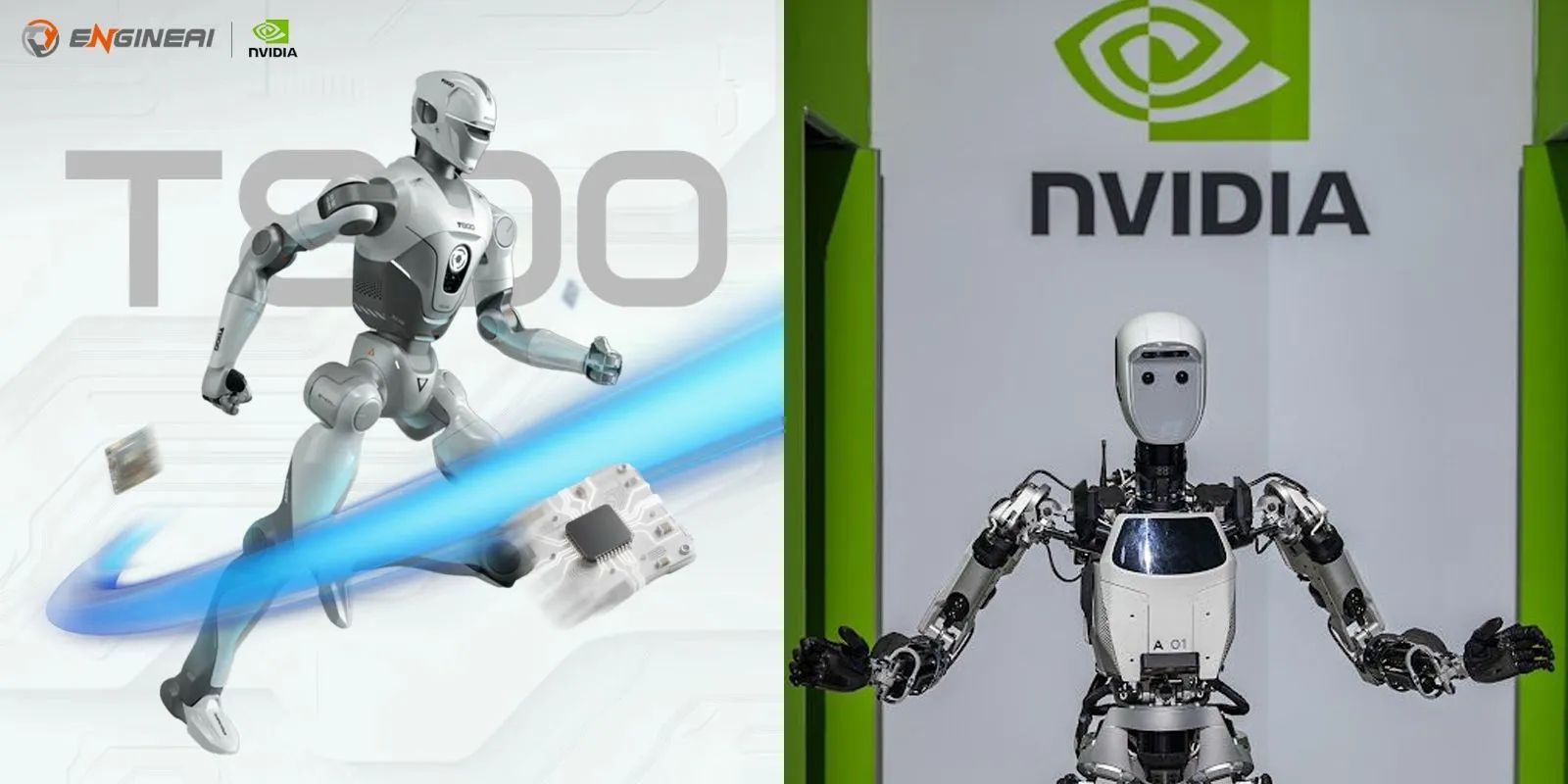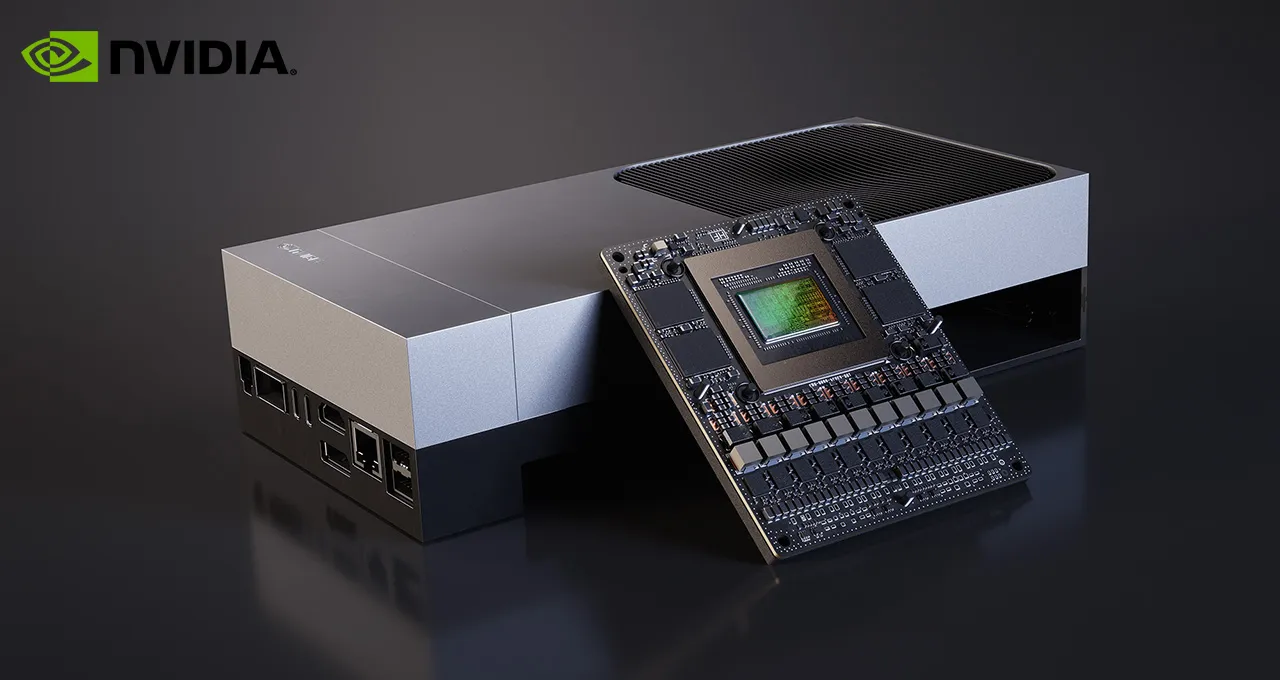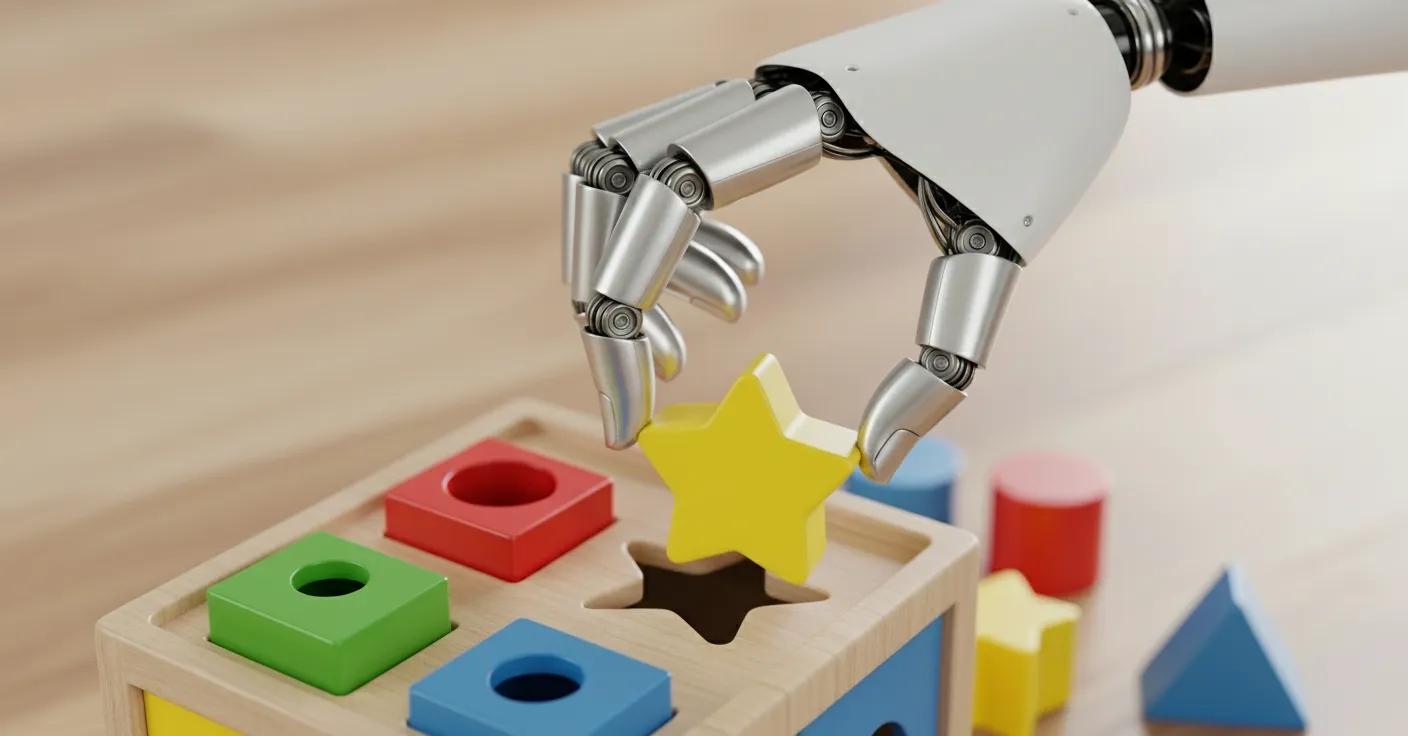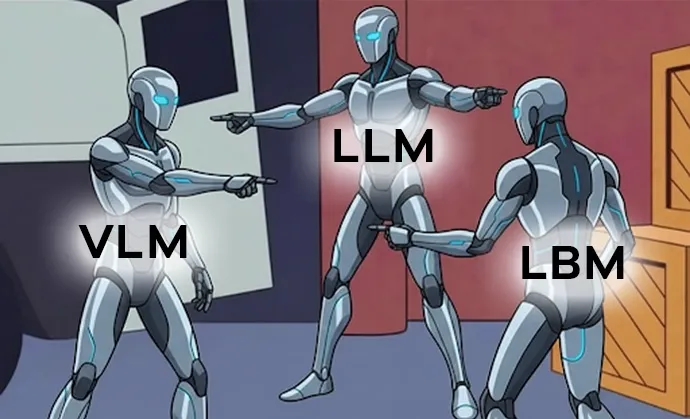- What is the NVIDIA Jetson AGX Thor Developer Kit?
- A deep look into the specification
- What can the processor do?
- A comparison with the predecessor - Jetson Orin series
In the fast-evolving world of robotics, hardware advancements are critical to unlocking new capabilities, especially for complex humanoid robots. Many robotics companies such as Agility Robotics, Boston Dynamics and Figure have been using NVIDIA's Jetson Orin as the foundation during the early stages of developing their robotic products. The Jetson Orin platform has powered thousands of robots worldwide with its robust AI capabilities. On the 25th of August 2025, NVIDIA has launched the new NVIDIA Jetson AGX Thor, a game-changing development kit designed to meet the growing demands of AI-driven robots. This new platform builds on NVIDIA’s previous Jetson Orin series but introduces significant improvements that promise to accelerate development and elevate robot intelligence and performance.
What’s New with Jetson Thor?
The Jetson Thor is NVIDIA’s latest System-on-Module (SoM) tailored for physical AI and robotics. It packs groundbreaking specs to handle the huge computational demands of multi-modal AI workflows in real time:
- AI Compute Power: Delivers up to 2,070 FP4 teraflops of AI performance—about 7.5 times the AI compute capability of the Jetson Orin.
- Energy Efficiency: Achieves 3.5 times better energy efficiency than its predecessor, enabling faster processing with lower power consumption.
- CPU and Memory: Features a 14-core ARM Neoverse V3AE 64-bit CPU and 128GB LPDDR5x RAM running at 3273GB/s, providing immense bandwidth for sensor data and AI workloads.
- Blackwell GPU Architecture: The advanced GPU supports MIG (multi-instance GPU), enabling concurrent execution of multiple AI models—a necessity for the simultaneous vision, language, and control needs of humanoid robots.
- Advanced Multimedia Processing: Supports decoding and encoding multiple 4K and 8K video streams, essential for robots relying on complex vision and sensor data.
- Connectivity: Offers 4× 25Gb Ethernet MACs and Gen5 PCIe lanes for high-speed sensor interfaces and data throughput.
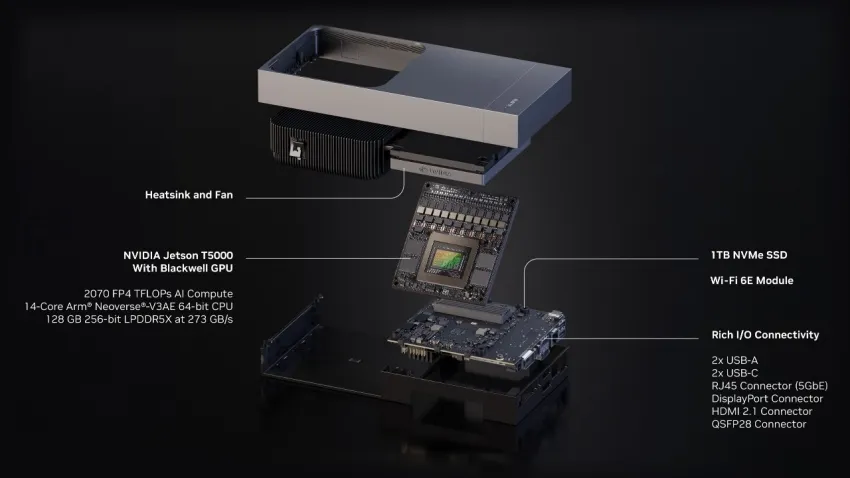
It may sounds confusing, but lets take a look at some analogies. Imagine a humanoid robot assistant in a busy hospital. It listens to voice commands, recognizes faces, monitors vital signs from multiple sensors, plans its movement around people and equipment, and talks naturally—all at once, with zero delay. Jetson Thor’s powerful processor and ability to run multiple AI models simultaneously let the robot "think" and act like a supercharged multitasker, making real-time decisions without waiting for a remote cloud server.
Jetson Thor can connect to up to 20 cameras and high-speed sensors (like LiDAR) delivering huge amounts of data simultaneously. Think of it as a massive data highway with extremely wide lanes, allowing streams of video and sensor input to flow without traffic jams. This is crucial for robots needing to "see" and "understand" their surroundings in 3D, such as autonomous delivery robots navigating crowded streets or agricultural robots monitoring crops from all angles in real time.
Benefits for Humanoid Robot Development
Humanoid robots require high-performance computing to simultaneously interpret visual data, understand complex speech commands, plan movements, and interact intelligently with their environments. Jetson Thor’s remarkable AI performance and memory capacity allow developers to run multiple generative AI models in parallel at the edge—meaning the robot can process data and make decisions in real time without relying on cloud connectivity.
This real-time reasoning is critical for robots in applications like healthcare, agriculture, logistics, and service industries, where latency or connection interruptions cannot be tolerated. Additionally, the improved energy efficiency ensures longer operation times, critical for practical deployment.
“With unmatched performance and energy efficiency, and the ability to run multiple generative AI models at the edge, Jetson Thor is the ultimate supercomputer to drive the age of physical AI and general robotics.”
- Jensen Huang, founder and CEO of NVIDIA
Jetson Thor vs. Jetson Orin: What’s the Leap?
Let's compare the Jetson Orin series processor to the latest Jetson Thor series.
Thanks to these upgrades, transitioning from Orin to Thor can speed up humanoid robot development by enabling:
- Real-time multi-AI workflows without bottlenecks.
- Handling large sensor data streams from cameras, LiDAR, and microphones.
- Execution of advanced generative AI models for natural interaction.
- More efficient power management for longer robot uptime.
Requirements and Ecosystem
Jetson Thor is targeted at developers requiring the highest AI and multimedia performance in robotics. It requires integration with a robust software ecosystem—the NVIDIA Jetson platform supports frameworks like Isaac for robot simulation, TensorRT for model optimization, and DeepStream for video analytics.
The module operates within a 130W power envelope, necessitating compatible carrier boards and cooling solutions suitable for industrial or research-grade robotics.
Conclusion
The NVIDIA Jetson AGX Thor marks a major leap forward in robotics hardware, especially for humanoid robots demanding multi-modal AI capabilities in real time. Its combination of massive AI power, energy efficiency, and software support promises to reduce development time and unlock new levels of autonomy and intelligence. As robotics developers migrate from Jetson Orin to Thor, we can expect faster innovation and more capable, intelligent robots interacting seamlessly with the physical world.
